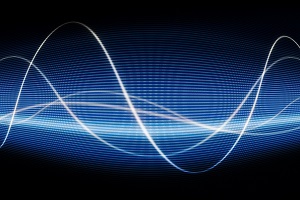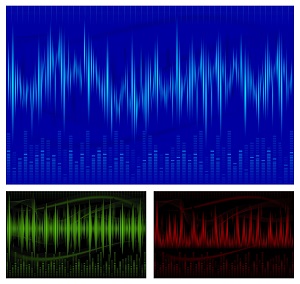15 Feb Perceptual Signatures
 We will momentarily leave Yorrick in his warm, cozy waterbed, to consider perceptual signatures that take place in the world outside him. This world is characterized by patterns, visual, audio, aromatic, tactile and complex, that each have their own signature. The section of this blog on cognition, which deals with logic and reasoning, explores that world by talking about universal laws.
We will momentarily leave Yorrick in his warm, cozy waterbed, to consider perceptual signatures that take place in the world outside him. This world is characterized by patterns, visual, audio, aromatic, tactile and complex, that each have their own signature. The section of this blog on cognition, which deals with logic and reasoning, explores that world by talking about universal laws.
In the early posts I’m preparing on cognition, I will introduce you to Joe’s universal theory: “Everything is interconnected, but all associations are context dependent.” A basic assumption that we sometimes fail to articulate is that things are either the same or different. This is where “signatures” become important. If our senses perceived two different things in exactly the same way, we would not be able to distinguish between them or accurately recognize them. This is exactly what magicians often try to achieve: to deceive our senses into believing something is something it is not.
| Understanding Context Cross-Reference |
|---|
| Click on these Links to other posts and glossary/bibliography references |
|
|
|
| Prior Post | Next Post |
| Remember Yorrick | Call in the Reinforcements |
| Definitions | References |
| logical form reasoning | NIH NCBI Perceptual Signatures |
| cognition recognition | Journal of Pattern Recognition Society |
| learning emotion | Duda 1973 |
| response understanding | Hubel 1988 |

At a very early age, we develop the ability to distinguish things with different perceptual signatures. Based on the differences, we learn. When we hear the sound of an auto motor, for example, we can distinguish it from a nightingale. When we see a car driving away or a nightingale flying away, we can perform abstract reasoning about relative distance based on the diminishing volume even when we can’t actually see the car or the bird. We use the perceptual signatures around us to reason about things.
Americans use the hand-written signature as a legal instrument for sealing transactions, covenants, contracts and obligations. Each of us has a distinctive hand and wrist motion when we write, and since these motions are recorded by the pen, it is often easy for hand-writing experts to identify forgeries. In Japan, the inkan, a small wooden stamp bearing the unique image of the bearer’s kanji-spelled name, is used as a legal instrument. This is Joe’s inkan:
 Each of the other objects in the picture bear a recognizable signature: The carved wooden mask from some ancient tribe, the neckerchief ring bearing the insignia of the Boy Scouts of America, the legal tender from the European Economic Community and the wood grain of a desktop. Apart from the explicit icons of imagery that form part of the signatures of these objects, we can identify the signatures of the materials of which these objects are made: wood, paper, metal, textile, liquid (ink).
Each of the other objects in the picture bear a recognizable signature: The carved wooden mask from some ancient tribe, the neckerchief ring bearing the insignia of the Boy Scouts of America, the legal tender from the European Economic Community and the wood grain of a desktop. Apart from the explicit icons of imagery that form part of the signatures of these objects, we can identify the signatures of the materials of which these objects are made: wood, paper, metal, textile, liquid (ink).
Each of us went through an extended learning process to acquire the ability to recognize these signature differentiators. Some images may evoke emotional responses that differ from other people’s responses. Yet we share enough framework that the descriptions I used above evoke a shared understanding. Language (words) are a very flexible and powerful vehicle of description and shared understanding. But I get ahead of myself – Yorrick is just learning to sense. It will be awhile before he learns any words.
 Sound Signatures
Sound Signatures
In the intelligence community, the term signature applies to a pattern formed by audio emanations. These emanations may be generated, for example, by a spinning submarine screw through the cavitation of air bubbles or by radio frequency (RF) signals. The principles used by intercept operators to identify and locate the sources of emanations over the audio and RF spectra are extensions of the very skills that Yorrick began to develop when mom was riding her horse along the dry streambed by her house in the beautiful Southwest. Later in life, Yorrick will be capable of feeling when horses are walking nearby even when he can’t hear their footsteps. All those years later, he will still be able to recognize the vibration patterns. 
Computers are getting pretty good at differentiating patterns, even across muliple modalities. One problem with computers today is that they normally can’t combine patterns from different modalities to derive more complex interpretations. This is a key element of understanding context: the ability to correlate input from multiple sources and of different modalities.
Another characteristic of signatures that I will expand on, as we move along, is the tendency of all things to fit on scales. The continuum of good to bad will be also be discussed, providing a framework for the consideration of the pervasiveness of linear scales in our perceptual environment. Some images appear so frequently in the modern world (and ancient) that most people can identify the subject easily. Can you recognize this signature image? 
The computer that is smart enough to engage in intelligent dialog with you will have to learn about the iconic images you can recognize instantly, as well as famous quotes from literature and personalities in current events and history. It will need to recognize most of the things that most people recognize.
| Click below to look in each Understanding Context section |
|---|








